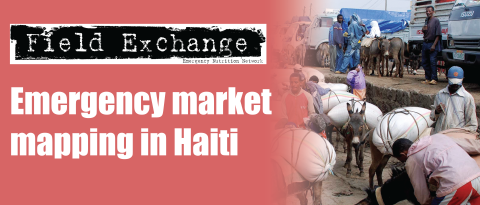Retrospective determination of whether famine existed in Niger
Summary of published research1

A child admitted to an MSF therapeutic feeding programme in Niger.
A recent study set out to apply the famine scale developed by Howe and Devereux to the situation in Niger, west Africa, in 2005, to determine retrospectively whether famine existed.
The authors assert that the absence of universal benchmarks or criteria to identify famine conditions creates uncertainty about the magnitude of the crisis, resulting in delays and inappropriate responses. In the context of the current global food crisis, with dramatic price increases and reduced accessibility to food in already food insecure populations, it may become even more critical to develop an internationally accepted definition of famine to guide humanitarian response and funding and to enforce accountability.
The famine scale proposed by Howe and Devereux is based on scales of intensity and magnitude. The intensity level in a given population is based on a combination of anthropometric and mortality indicators and on descriptors of food security. These descriptors include coping strategies and stability of the market and food prices. The intensity scale is used to assign population areas within a country to a level, from 0 (food secure conditions) to 5 (extreme famine conditions). Intensity levels of 3 (famine conditions) or above register as a famine on the magnitude scale, which ranges from minor famine to catastrophic famine. The magnitude scale is determined retrospectively by measuring excess mortality caused by the crisis.
International agencies raised concerns about the increasing admission rates of malnourished children in therapeutic feeding centres in the Maradi region between February and April 2005. Local surveys in the Maradi and Taboua regions between April and May 2005 showed that the prevalence of global acute malnutrition among children aged 6-59 months exceeded the 15% critical threshold established by the World Health Organisation (WHO). It was unclear whether these reports represented a localised event or if the crisis extended to regional and even national levels; the question of a current or imminent famine was also uncertain. Thus the scale and severity of the food crisis in Niger remained in dispute.
The researchers applied the famine scale to the situation in Niger in 2005 by assessing mortality and household coping strategies with rates of malnutrition, to determine retrospectively whether famine existed. Surveys were carried out in eight regions, using stratified two stage cluster survey design. Pastoralists (estimated at 5%) were excluded from the survey, given the complexity of sampling this mobile population. Coping strategies for dealing with insufficient food needs since the beginning of the last hungry season in 2005 were stratified into four mutually exclusive categories: no coping strategies, reversible adaptive strategies that should not harm future livelihoods, irreversible coping strategies that threatened future livelihoods, and survival strategies involving disengagement from any normal livelihoods systems and focusing purely on survival.
Findings
The estimated national crude mortality rate was 0.4 (0.4-0.5) deaths per 10,000 per day and the under five mortality rate was 1.7 (1.4-1.9) deaths per 10,000 per day. Nationally, 22.3% (95% confidence interval 19.9%-24.8%) of caregivers of under 5 year olds did not resort to any coping strategies to deal with insufficient food needs. Reversible coping strategies were, however, used by 5.8% (4.7-7.0%) of caregivers, whereas 49.4% (46.9-51.8%) relied on irreversible coping strategies and 22.6% (20.0% to 25.4%) on survival strategies.
On the basis of the famine scale, most regions in Niger 2005 experienced food crisis conditions and some areas approached famine proportions. The absence of a universally accepted definition of famine contributed to disagreements about the magnitude and severity of the problem. This highlights the need for an internationally agreed definition of famine and for clear guidelines on the timing and magnitude of a response.
Although the utility of the famine scale by Howe and Devereux needs rigorous assessments, it does provide more objective criteria than previous approaches. It also moves from a binary concept of 'famine or no famine' to a graduated approach that captures a range of food insecurity situations.
The authors conclude that nutrition surveys such as these, with data collected on malnutrition and mortality as well as on coping strategies, improves the ability to triangulate different types of information to determine the true magnitude of a crisis.
1Reza.A (2008). Retrospective determination of whether famine existed in Niger, 2005: two stage cluster survey. BMJ 2008:337:a1622dol:10.1136/bmj.a1622 Download full article at: http://www.bmj.com/cgi/content/full/337/oct02_1/a1622
Imported from FEX website


